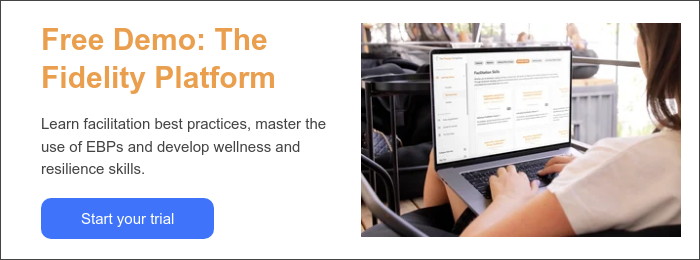Strategies for running an effective process group

The goal of a process group is to create corrective emotional experiences by identifying underlying psychological and behavior problems, demonstrating the functionality of the behaviors, demonstrating the dysfunctionality of the behaviors, providing ideas for alternative behaviors and allowing participants to try the new behaviors and receive feedback.
This is different from other kinds of therapeutic groups in that the emphasis is on exploring participants’ interactions with each other. A facilitator might pose general questions like, “What successes have you experienced since our last session?” or “What challenges have you encountered?” Pay attention to interactions among participants and look for clinical opportunities in each session.
You can guide your group to identify specific issues by asking open-ended questions and offering process commentary. Examples of this include:
Did anybody notice what just happened here?
What do you think the group is avoiding right now?
Who would like to summarize what’s been going on?
What might you need to leave group in a good place today?
Can you connect that feeling to anything going on in your life (or the room) right now?
How can you help each other get your needs met?
How did that situation contribute to your substance use?
Process commentary can also involve comments about specific patterns and behaviors from individuals in the group. Examples of this might include:
Have we seen similar problems from Sam before?
Is the group surprised by this behavior from Mia?
What did Teresa just do right there?
What reaction did you have when Daniel did that?
When Leon did that, what does it lead you to think about him?
Who here has done something similar to what Carla just did?
Has anyone had someone in their lives who did things similar to how Andre does them?
What gets in the way of you thinking rationally?
In process group, we go beyond the content of the discussion: the explicit words spoken, the issues, the arguments, stories, advice, etc.; and work to identify the process: what is happening in the room between and among members. Process commentary includes what is happening, the nature of the discussion, how individuals relate to each other and group movement. Both content and process are essential for an effective process group.
Process commentary is generally triggered when participants bring their problematic behavior patterns into the process group. Examples of this might be: one group member is tuned out or not working; group members displaying strong reactions to the content of the group or to one another; or attempting to focus the group’s attention onto or away from specific topics. Process commentary is a progression that may involve the following:
A simple observation of a single act: “Your voice is tight and your fists are clenched.”
Descriptions of feelings evoked by the act: “When you do/say that, I feel taken aback.”
Observations about several acts over a period of time: “You are more talkative at lunch than you are in this group.”
Speculations about the participant’s motives and behaviors
Calling attention to the participant’s behavioral patterns in the here and now and connecting these patterns to other environments
Asking participants if they are satisfied with the consequences of their behavior
In each group, it also can be helpful to tune in to the following:
Concepts that aren’t getting mentioned
Topic areas that come up repeatedly
Participants with a pattern of disengaging or monopolizing in discussions
Communication styles being used by participants
Participants who have not changed the way they manage their anger and other difficult feelings
Participants who brag or glorify an unhealthy lifestyle by dwelling on the past
Participants who cannot identify their successes or who are not currently working toward goals
You will find clinical opportunities for process commentary within individual, interpersonal and group dynamics. Use the least directive commentary possible to help you get the group where you want it to go.
It often helps if you are familiar with motivational interviewing so you can craft questions designed to invite change talk. Within a group environment, observe what happens organically between members during a discussion. How participants behave toward and interact with one another often reveals a great deal about their issues and needs.

